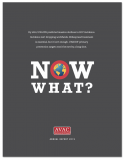- About UsOur Story, Our Team & Support Information
- What We DoAdvocacy to Achieve the End of AIDS
- Advance HIV/SRH Integration
- Advocate for Access to High-Impact Prevention
- Improve Research Conduct
- Product Innovation & Availability
- Promote Effective HIV Prevention Policy
- Strengthen Global Advocacy Networks
- Track and Translate the Field
- Our FocusInterventions to End the Epidemic
- ResourcesPublications, Infographics, Events & More
- MediaInformation & Resources for the Press
- Our BlogPrevention News & Perspective
To save lives, HIV treatment alone isn’t enough. Suppressing HIV is what matters.
In 2011, a landmark clinical trial showed that early initiation of anti-retroviral therapy (ART) for people who are HIV-infected cuts the risk of HIV transmission by a stunning 96 percent. The trial provided powerful new momentum to global efforts to expand treatment access — both for the health of individuals living with HIV and for the potential to prevent millions of new infections.
Getting people onto treatment, though, is only half the story. To save lives and slow the HIV epidemic, treatment needs to achieve long-term virologic suppression — meaning the level of HIV in a person’s body is essentially undetectable. In most countries, only a minority of people with HIV have their virus in check. To make viral suppression the norm, better adherence programs, viral load monitoring and other steps are urgently needed.
What We're Reading
Featured Resources

